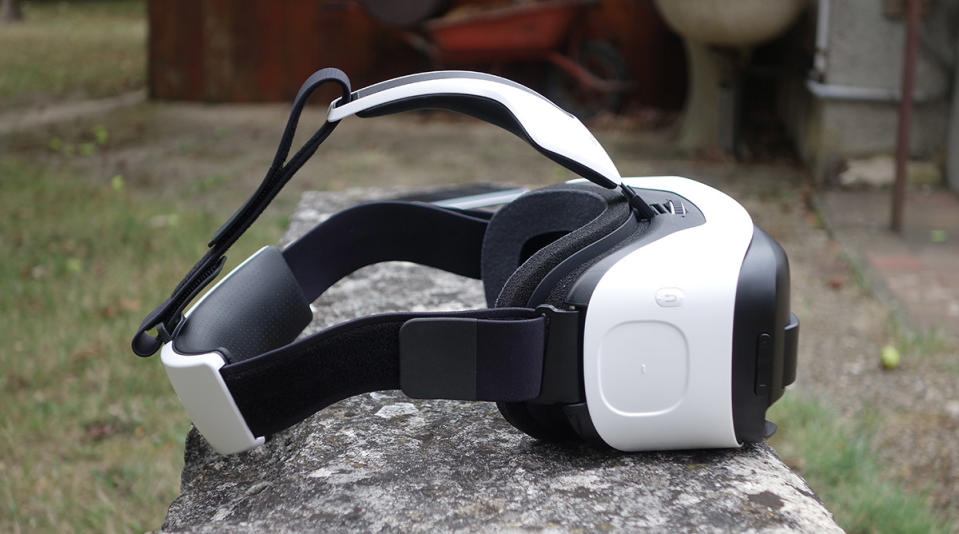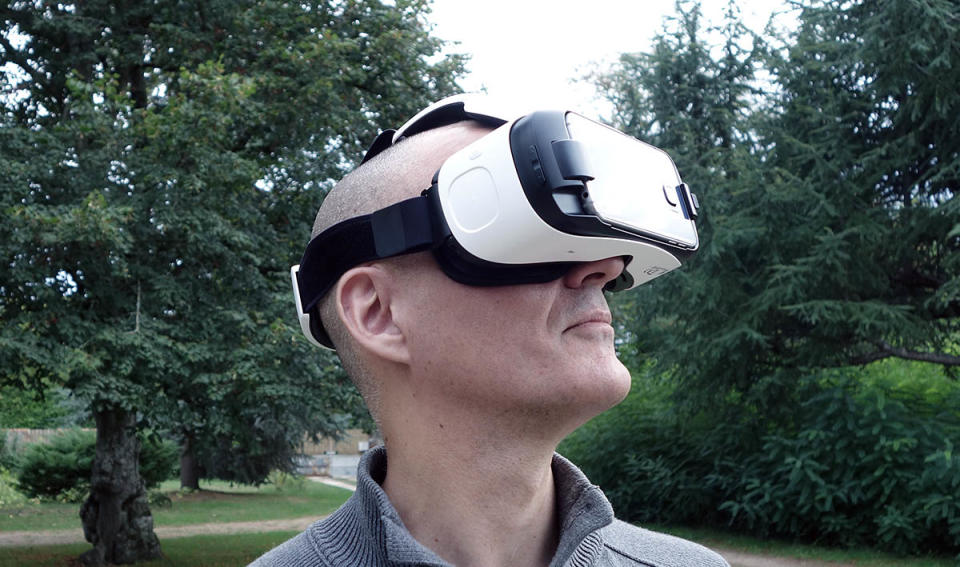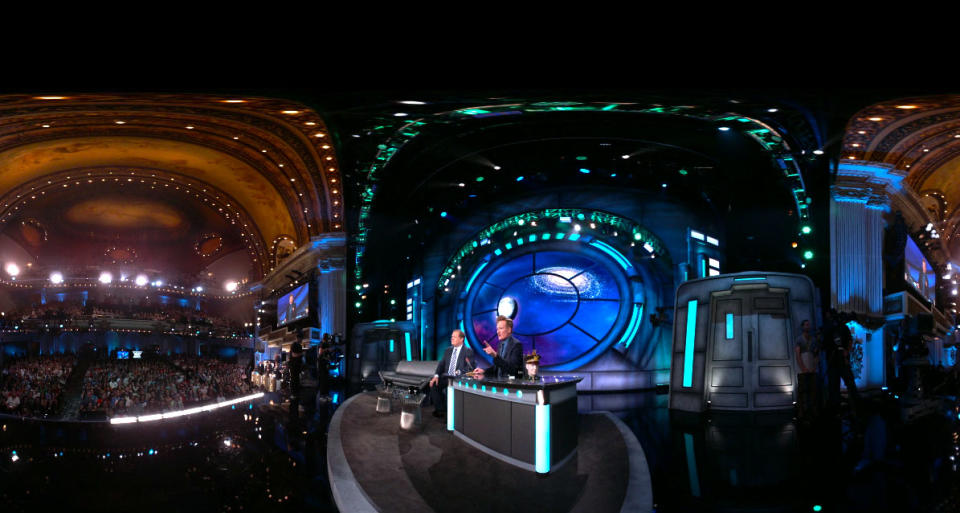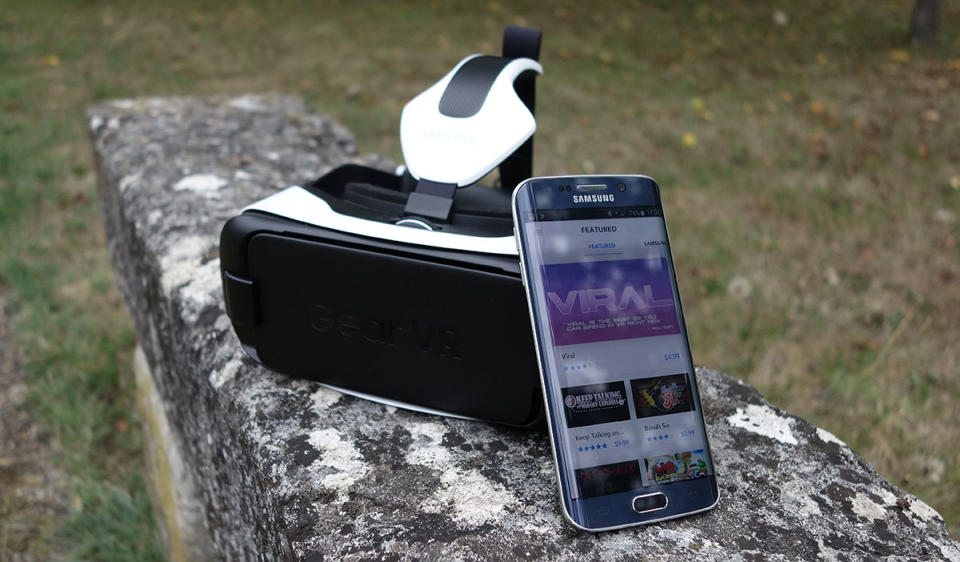For $200, Samsung's latest Gear VR headset is a no-brainer

If you're the owner of a new Samsung Galaxy S6 or S6 Edge, an extra $200 will get you Samsung's Gear VR Innovator Edition, one of the first virtual reality headsets available to the public. Like others following the Oculus Rift story, I assumed that all VR headsets still presented issues like nausea and lag and weren't yet consumer-friendly. But I wanted to see for myself what the fuss was all about, and since I already have an S6 Edge, I decided to splurge on one. In a few short days, my prejudices have melted away: The Gear VR isn't perfect, but it already does plenty of things, and does them well.
After owning a OnePlus One for the better part of a year, I ditched it in favor of a Galaxy S6 Edge. That's because I wanted to get into virtual reality (among other reasons), and the Gear VR with a Galaxy S6 attached is smaller and lighter than the original Gear VR with a Galaxy Note 4. With motion sensors, a touchpad, a volume control and a back button, it's far more sophisticated than, say, Google Cardboard. Like the last-generation Gear VR, this one is powered by your smartphone, which you can now charge while using the headset via a USB passthrough port (the first Gear VR didn't have one).

Also like the original, the new Gear VR requires you to clip in specific phones -- the Galaxy S6 or S6 Edge -- to function as computer, sound system and display. Luckily, those phones have Quad HD screens squeezed into 5.1 inches, which makes for an ultra-dense 576 pixels per inch -- ideal for a display that's just an inch from your face. (I now regret saying that 4K smartphone screens were dumb, because that would be amazing.) A pair of magnifiers gives you stereoscopic vision, and there's a focus wheel with a wide range of adjustment. The headset doesn't allow for glasses, however. Software-wise, Samsung wisely let Oculus handle the software and supply VR-specific apps like Oculus 360 and Oculus Cinema. The result is a headset that's easy to set up and operate, and searching for content is easy.

Using a VR system isn't like being in the Matrix, but it does feel a little weird. Sure, it's disorienting at first, and if cellphone screens mess with your sleep cycle, then the extra light from VR headsets will likely obliterate it. Still, I never experienced any dizziness, nausea or other side effects supposedly common with these sorts of headsets. That's perhaps thanks to the Gear VR's motion sensors, which are very responsive. I found the UI surprisingly natural; you just look at what you want to select and then tap the touchpad on the side of the Gear.
VR suffers from a well-publicized lack of content, but it's not like there's none. For one, you can play any regular or 3D movie (more on that in a sec), Oculus 360 and stereoscopic videos, YouTube clips, porn (of course), games and VR "experiences" that combine those things. An example of the latter is the Insurgent VR "Shatter Realty" experience (embedded below), where you get a bit of everything: stereoscopic 3D and wraparound 360-degree views, all tied together with a game-style story line. During one segment, you're perched high on a skyscraper with a vertigo-inducing view straight down, and at another point, there's a train barreling straight toward you.
The games I tried weren't amazing, but smartphones lack the graphics power for the sort of visually dense games that would do the Gear VR justice. As revealed at Oculus' Mobile VR Jam, however, plenty of interesting titles are coming for the headset. Keep Talking and Nobody Explodes is probably the best-known title available now, but requires at least two people (and preferably more) to play. I also tried an FPS called Protocol Zero ($5, Android gamepad required), which uses low-res graphics to good effect inside the Gear VR by tapping into the 360-degree, stereoscopic environment. Gaming will be a different story on the Oculus Rift, of course, as it will run on PC hardware.
There are no issues with cinematic content, however. There's some "screen-door" pixelation on the Gear VR, even with content developed for the 2,560 x 1,440 Galaxy S6, but it's hardly noticeable. Oculus Cinema puts you in one of several fully rendered, 360-degree, theater-style environments; you can see the floor, seats and even the projector behind you. It feels like some of those pixels are wasted -- why not let the film fill your field of vision? But I happily watched Casino Royale and other films on the Gear VR and promptly forgot about it.

Zero Point Oculus 360 film from Condition One
Oculus 360 movies are brilliant; they actually live up to the "put you in the action" trope. All the pixels are put to use, so the realism is often palpable. It does present a storytelling problem, however: The camera position shifts constantly in regular cinema so that the director can drive the plot forward. Doing that in an Oculus 360 movie would be jarring, because you feel like you're a character in the movie, not an observer. For me, the better option is 180-degree, stereoscopic movies. Still, having the action all around you in 3D is far more immersive than a regular 3D film.
Dramatic VR films could eventually blow IMAX away if handled correctly. Film studios haven't produced any notable content, so all you can see now are demos like 11:57, a horror short -- or the adventure film Zero Point (above). On the other hand, companies like Virtual Real Porn have already produced numerous titles. I checked a few for er, research purposes, and 180-degree stereoscopic porn doesn't come close to real sex as some are hoping, but it's definitely much more immersive.

Should you buy a Gear VR Innovator Edition? Assuming you have a Galaxy S6 or S6 Edge and enjoy fun, then yes: a million times yes. Gaming is its Achilles' heel, but serious gamers would never consider Android anyway. Even so, you can use the device now -- today -- to comfortably watch regular 2D and 3D films anywhere without squinting at your smartphone screen. And the immersive Oculus 360 and stereoscopic movies (and photos) are the height of the VR experience, letting you explore real or synthetic worlds in a way you never could before. There's still a lack of content, but that'll come, and the headset still gives you plenty to do right now. For $200, why wait?
[Image credits: Team Coco, Condition One]













